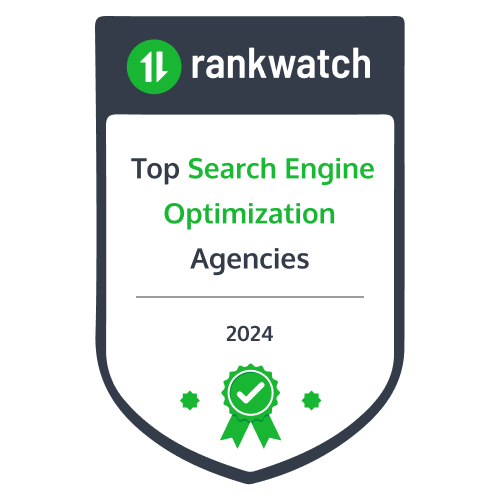Influencer marketing has become a cornerstone strategy for e-commerce businesses looking to expand their reach and drive sales. This comprehensive guide explores how to effectively implement influencer marketing strategies to achieve sustainable e-commerce growth.
Understanding Influencer Marketing in E-commerce
Influencer marketing leverages the trust and authority that content creators have built with their audiences to promote products and services. For e-commerce businesses, this translates into increased brand awareness, higher conversion rates, and authentic customer engagement.

Influencer Marketing Statistics for E-commerce Business
Let’s discuss some of the top Influencers marketing statistics in Ecommerce
- 72% of marketers used Instagram to run influencer marketing campaigns in 2022
- 17% invest in influencer marketing in 2023
- 38% of marketers mention being able to generate new sales is their chief goal for influencer marketing in 2022
- Influencer marketing grew 28% in 2019— that’s more than double the growth email enjoyed in the same period.
- In 2017 Google searches for influencer marketing grew by 325%
How to Create an Influencer Marketing Strategy
If you lack a marketing strategy business a business owner isn’t for you. Every business owner should have a good strategy they can use.
When you are armed with the right strategy it makes it easy to identify right influencers for the positive result.
It isn’t very simple. If you want to use it to full potential, getting things right is must.
Set a goal thinking of outcomes for your audience.
Sortlist the best influencers who can do a great promo for your product.
1. Set your goals
Just think of the goals you want with influencer marketing campaigns. This will help you zero in on metrics to keep your eye on.
Increase followers? Want more sales and need extra work done before launch. Do proper tracking, look at customer data and identify tracking source.
2. Identify your Influencer marketing Channel
The social media channel for marketing depends on your audience. Nothing is better than Instagram. Prepare the kind of content to deliver to your audience through posts and reels.
Instagram’s professional dashboard also makes link stickers available to all accounts, to create live shopping and more.
Developing Your Influencer Marketing Strategy
Setting Clear Objectives
Before launching any influencer campaign, establish specific, measurable goals:
- Brand awareness metrics (reach, impressions, engagement)
- Sales targets (conversion rates, revenue generated)
- Content creation goals (user-generated content, testimonials)
- Community building objectives (follower growth, engagement rates)
Let’s say you are a machine learning or a data analytics startup. Barring the similarities of these, you need to center your focus around building a community around you to support your vision. This is only possible with consistently honing your message and delivering it to the right target audience. If you are struggling with candidates, then candidate sourcing strategies can help.
Identifying Your Target Audience
Success in influencer marketing begins with a deep understanding of your target demographic:
- Demographics (age, location, income level)
- Psychographics (interests, values, lifestyle)
- Shopping behaviors and preferences
- Social media platform preferences
Finding and Selecting the Right Influencers
Types of Influencers
Different influencer tiers serve different purposes:
- Nano-influencers (1,000-10,000 followers): Highest engagement rates, perfect for local targeting. Statistics on influencer marketing reveal us that nano and micro influencers have the biggest impact.
- Micro-influencers (10,000-100,000 followers): Strong niche authority, balanced reach and engagement
- Macro-influencers (100,000-1M followers): Broader reach, professional content creation
- Mega-influencers (1M+ followers): Massive reach, best for brand awareness
Evaluation Criteria
Consider these factors when selecting influencers:
- Audience alignment with your target market
- Engagement rates (likes, comments, shares)
- Content quality and aesthetic
- Previous brand collaboration history
- Authentication metrics (fake follower analysis)
Creating Effective Campaigns
Campaign Types
- Product Reviews and Unboxings
- Detailed product demonstrations
- Honest feedback and experiences
- Technical specifications and features
- Comparative analysis with similar products
- Exclusive Discount Codes
- Unique promotional codes per influencer
- Time-limited offers
- Tracked conversion rates
- Commission-based incentives
- Social Media Takeovers
- Day-in-the-life content
- Behind-the-scenes access
- Live shopping events
- Q&A sessions
- User-Generated Content Campaigns
- Creative challenges
- Hashtag campaigns
- Customer testimonials
- Community engagement
Measuring and Optimizing Performance
Key Performance Indicators (KPIs)
Track these metrics to measure campaign success:
- Engagement rate
- Click-through rate
- Conversion rate
- Revenue generated
- Return on investment (ROI)
- Brand mention sentiment
- Follower growth
- Website traffic
Attribution and Tracking
Implement robust tracking systems:
- Unique discount codes
- UTM parameters
- Affiliate links
- Custom landing pages
- Pixel tracking
- Instagram Shopping tags
Legal and Compliance Considerations
FTC Guidelines
Ensure compliance with advertising regulations:
- Clear disclosure of sponsored content in your guidelines so that people know what they are buying
- Transparent partnership declarations
- Honest product reviews
- Proper use of advertising disclaimers
Contract Elements
Include these essential components in influencer agreements:
- Scope of work
- Content requirements
- Usage rights
- Payment terms
- Exclusivity clauses
- Performance metrics
- Termination conditions
Budget Planning and ROI Optimization
Cost Structures
Common payment models include:
- Flat-rate fees
- Performance-based compensation
- Hybrid models
- Product-only partnerships
- Revenue sharing agreements
ROI Calculation
Calculate return on investment using: ROI = (Revenue Generated – Campaign Costs) / Campaign Costs × 100
Best Practices for Long-term Success
- Building Authentic Relationships
- Focus on long-term partnerships
- Allow creative freedom
- Maintain regular communication
- Provide value beyond compensation
- Content Quality Control
- Establish clear brand guidelines
- Review content before publication
- Maintain consistent messaging
- Ensure authentic representation
- Community Management
- Engage with audience comments- ideally spend time to reply to every comment you see
- Address feedback promptly and answer questions, make improvements
- Foster community discussions with engaging content
- Leverage user-generated content
Conclusion
Successful influencer marketing for e-commerce requires a strategic approach, careful planning, and continuous optimization. By following these guidelines and adapting to changing market conditions, brands can build sustainable growth through influencer partnerships.
Understanding that influencer marketing is an evolving landscape, stay informed about platform changes, emerging trends, and shifting consumer behaviors to maintain campaign effectiveness and achieve consistent results.




